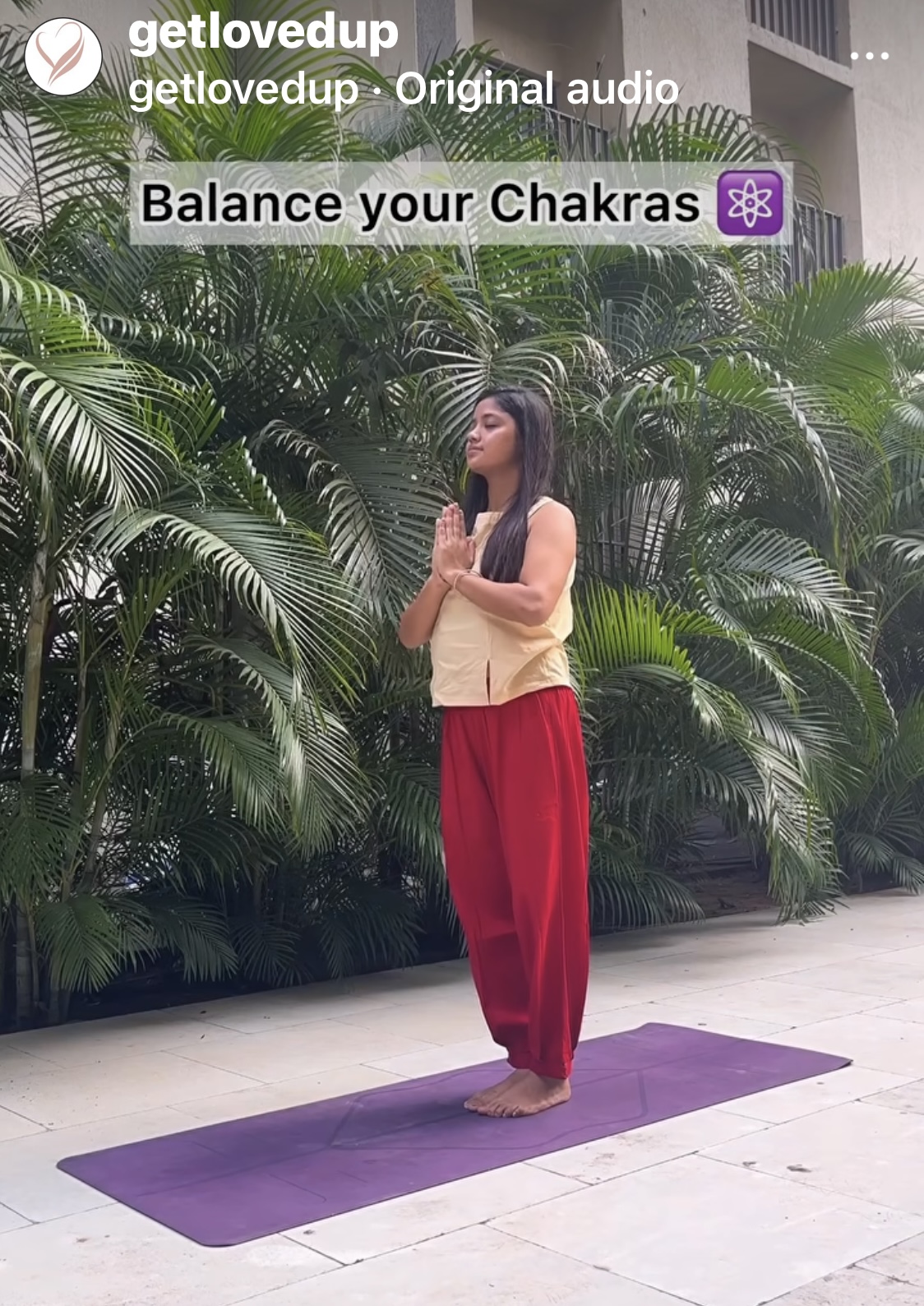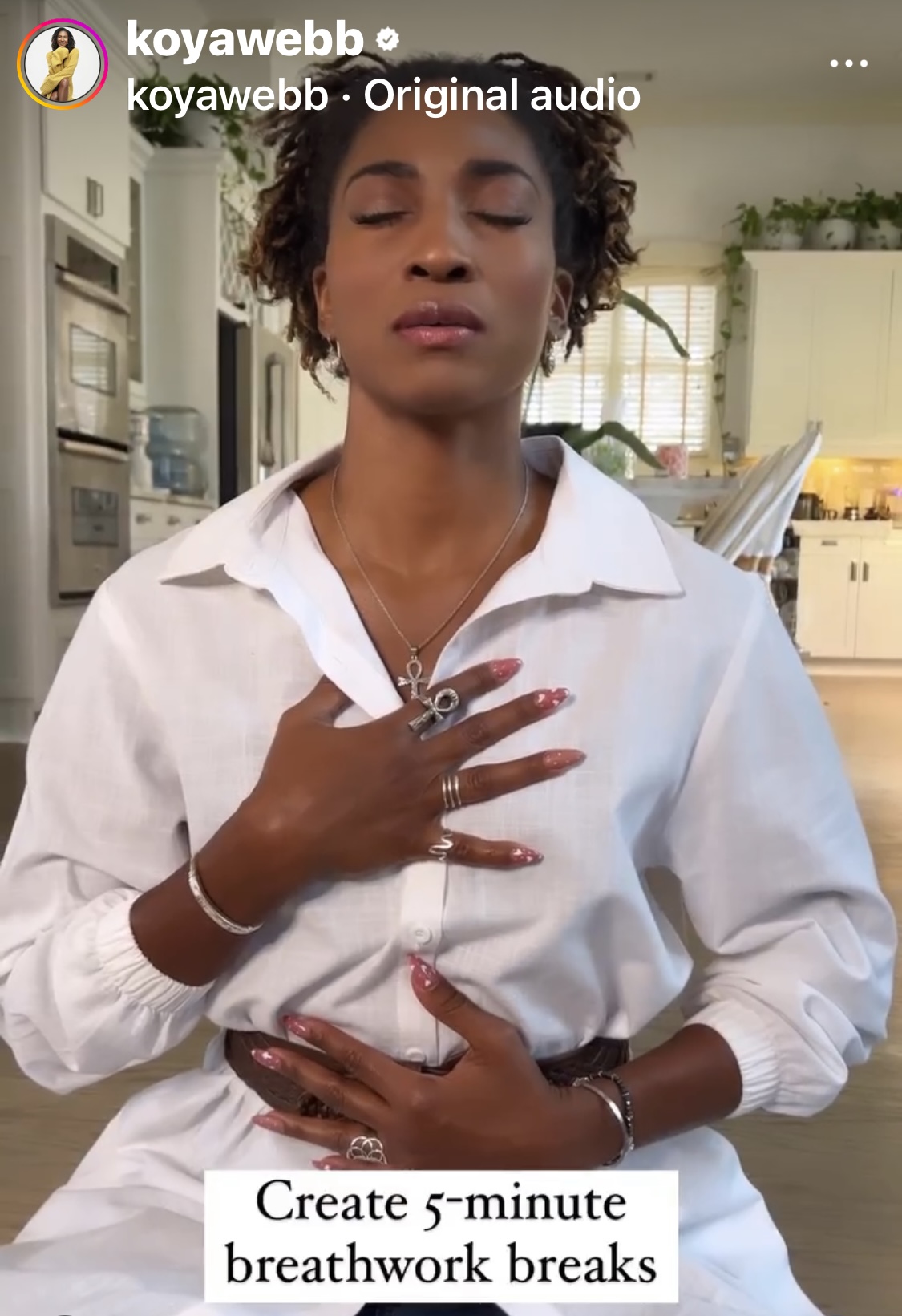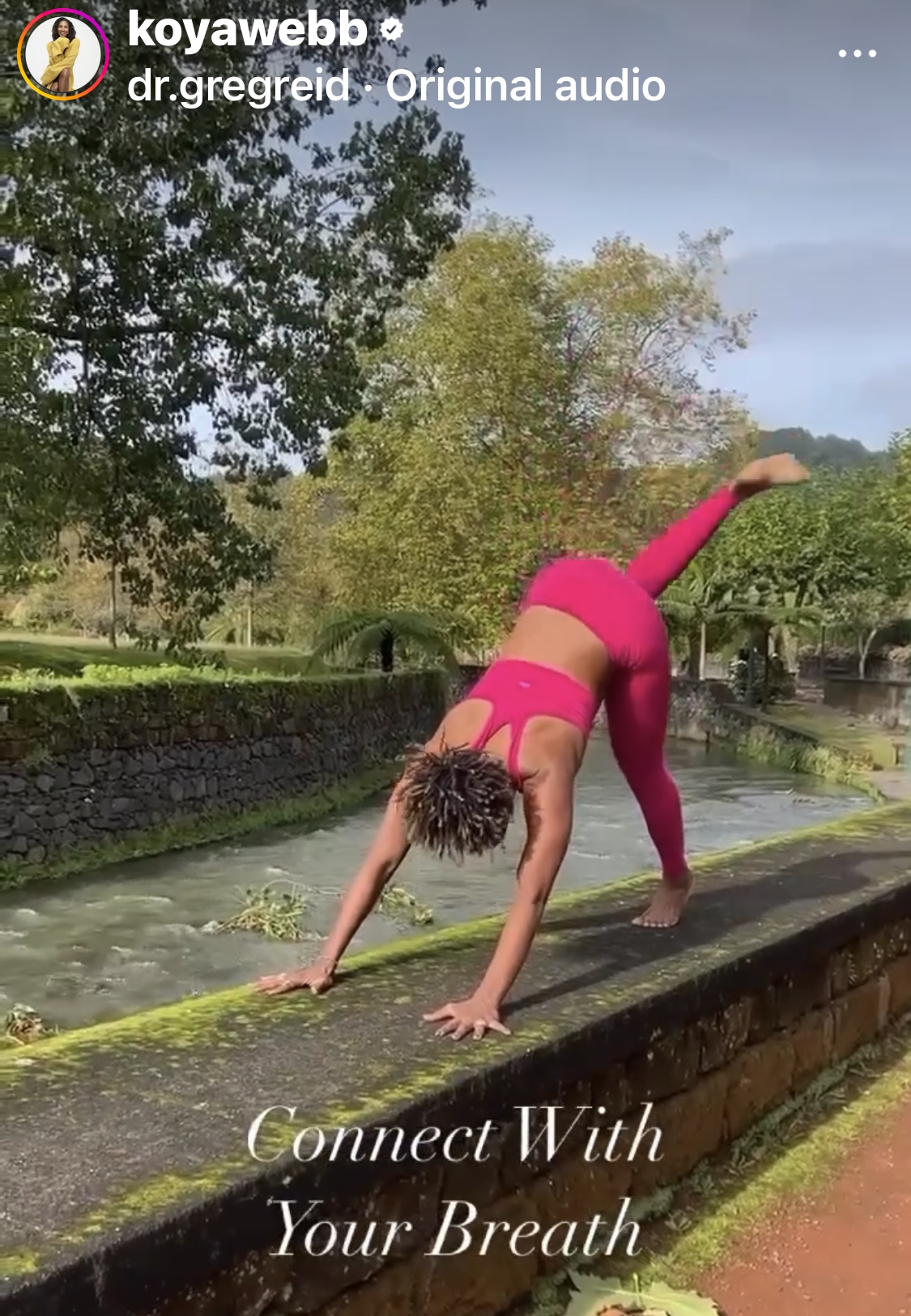In the hustle and bustle of modern life, it’s easy to take something as fundamental as breathing for granted. We often forget that breath is not merely an involuntary bodily function but a powerful tool that can be harnessed to improve our physical and mental wellbeing. This is where breathwork comes into play. In this comprehensive guide, we will explore what breathwork is, why it’s important, its myriad benefits, common exercises to incorporate into your daily life, common breathing dysfunctions, and potential causes of these dysfunctions. By the end of this journey, you will gain a profound understanding of the transformative potential of your breath.
On average, a person takes approximately 12 to 20 breaths per minute at rest. This means that over the course of a day, you would typically breathe:
At a rate of 12 breaths per minute: 12 breaths/minute x 60 minutes/hour x 24 hours/day = 17,280 breaths per day.
At a rate of 20 breaths per minute: 20 breaths/minute x 60 minutes/hour x 24 hours/day = 28,800 breaths per day.

So, a person at rest breathes anywhere from roughly 17,280 to 28,800 times per day. It’s important to note that this rate can vary depending on factors such as activity level, stress, and individual differences. During physical activity or in stressful situations, your breathing rate may increase significantly to meet the body’s oxygen demands.
What is Breathwork?
Breathwork is a holistic practice that involves conscious control and manipulation of one’s breath to achieve specific physical, mental, and emotional outcomes. It draws inspiration from ancient Eastern practices like yoga and meditation where breath control has long been recognized as a key component of overall wellbeing. Breathwork encompasses various techniques, each with its own unique approach and goals.
These techniques can be broadly categorized into two main types:
Pranayama: Derived from yoga, pranayama is the art of breath control. It involves a range of breathing exercises, such as deep belly breathing, alternate nostril breathing, and the Kapalbhati breath [also known as ‘Shining Skull’, this is a great breath to help keep you calm and strengthen your liver and kidney functions], among others. Pranayama aims to balance and harmonize the flow of prana (life force) in the body.
Holotropic Breathwork: Developed by Dr. Stanislav Grof, holotropic breathwork involves rapid, deep breathing patterns to induce altered states of consciousness. This approach is often used as a therapeutic tool for emotional healing and self-exploration.

Why is Breathwork Important?
Breath is the bridge between the conscious and unconscious realms of our existence. It serves as a constant reminder of our connection to the present moment. Here’s why breathwork is so crucial:
Stress Reduction: One of the most immediate and profound benefits of breathwork is its ability to reduce stress. By engaging in conscious breathing, you activate the body’s relaxation response, lowering cortisol levels and promoting an overall sense of calm.
Improved Mental Clarity: Mindful breathing enhances focus and mental clarity. It can help you break free from the clutter of racing thoughts, allowing you to make decisions with greater ease and precision.
Enhanced Emotional Regulation: Breathwork can be a potent tool for managing emotions. It allows you to observe your feelings without judgment and respond more skillfully to challenging situations.
Physical Wellbeing: Proper breathing techniques can improve lung capacity, better oxygenate the blood, and enhance overall physical health. It can also aid in pain management and boost the immune system.
Spiritual Growth: For those on a spiritual journey, breathwork can facilitate altered states of consciousness, providing a deeper connection to the self and the universe. It can be a catalyst for self-discovery and personal transformation.

The Benefits of Breathwork
The benefits of incorporating breathwork into your daily life are multifaceted and extend far beyond the physical realm. Here are some of the most compelling advantages:
Stress Relief: Chronic stress is a major contributor to various health issues. Regular breathwork can significantly reduce stress levels, promoting relaxation and mental wellbeing.
Improved Mental Focus: Breathwork sharpens mental acuity, helping you stay present and focused in the midst of distractions. This is particularly useful for productivity and creativity.
Emotional Balance: Breathwork helps regulate emotions by calming the nervous system. It can be a valuable tool for managing anxiety, depression, and other mood disorders.
Enhanced Physical Health: Proper breathing techniques improve lung function, boost oxygen supply to the body’s cells, and support overall physical health. This can lead to increased energy and vitality.
Better Sleep: Breathwork can help alleviate sleep disturbances and insomnia. Relaxation techniques before bedtime can promote restful, rejuvenating sleep.
Increased Self-Awareness: Conscious breathing encourages self-reflection and self-awareness. It can help you gain insight into your thoughts, emotions, and behavioral patterns.
Spiritual Growth: For those seeking spiritual growth and self-realization, breathwork can be a powerful catalyst for transcendent experiences and inner transformation.

Breathwork can serve as a powerful tool for regulating the nervous system, especially during moments of heightened stress or when the body is in fight, flight, or freeze mode. By engaging in mindful, deep, and controlled breathing, you can shift from the sympathetic to the parasympathetic mode, promoting relaxation, reducing stress, and facilitating a more balanced and resilient response to life’s challenges. Incorporating breathwork into your daily routine can lead to a greater sense of wellbeing and improved emotional regulation.
To understand how breathwork affects the nervous system in these states, let’s first explore the autonomic nervous system (ANS) and its two primary branches: the sympathetic and parasympathetic nervous systems.
- Autonomic Nervous System (ANS):
The ANS is responsible for regulating involuntary bodily functions such as heart rate, digestion, respiratory rate, and more. It consists of two main branches:
Sympathetic Nervous System (SNS): Often referred to as the “fight or flight” system, the SNS prepares the body for action in response to perceived threats or stressors. It triggers physiological changes like increased heart rate, shallow and rapid breathing, heightened alertness, and the release of stress hormones like adrenaline and cortisol.
Parasympathetic Nervous System (PNS): The PNS is often referred to as the “rest and digest” system. It promotes relaxation, recovery, and energy conservation. Activation of the PNS leads to slower heart rate, deeper and slower breathing, improved digestion, and reduced stress hormone levels.
- Impact of Breathwork on the Nervous System:
Breathwork techniques can influence the autonomic nervous system, helping to shift the body’s response from the sympathetic (fight or flight) mode to the parasympathetic (rest and digest) mode.
Here’s how breathwork achieves this:
Deep and Slow Breathing: When you consciously engage in deep, slow breathing, you activate the diaphragm and stimulate the vagus nerve, a key component of the parasympathetic nervous system. This triggers a relaxation response, slowing the heart rate and reducing stress.
Mindful Breathing: Mindfulness techniques often involve paying close attention to your breath. This mindfulness practice can reduce anxiety and stress by grounding you in the present moment, allowing you to detach from worries and concerns that trigger the sympathetic response.
Box Breathing and Extended Exhalation: Techniques like box breathing (equal-length inhales, holds, exhales, and pauses) or extending the exhalation phase of your breath can stimulate the PNS. These practices help calm the mind, lower your heart rate, and reduce stress hormones.
- Breathwork and the Fight, Flight, or Freeze Response:
Breathwork can be particularly effective in mitigating the body’s response to stress and fear, which often manifests as the “fight, flight, or freeze” reaction.
Here’s how:
Fight: When confronted with a perceived threat, the body prepares for physical combat. Breathwork techniques can help control the adrenaline rush that occurs during this response. Deep, steady breaths can keep you grounded and focused during challenging situations, preventing impulsive reactions.
Flight: In situations where you might feel compelled to escape, controlled breathing can help you maintain a sense of control and prevent panic. Mindful breathing can slow racing thoughts, allowing for more rational decision-making. When your body is in flight mode it cannot tell the difference between what you’re actually experiencing and being chased by a tiger as it feels the same.
Freeze: Sometimes, when facing extreme stress, the body enters a state of freeze or immobilization. Breathwork can gently guide the body out of this state by promoting relaxation and reestablishing a sense of safety.

Common Breathwork Exercises to Incorporate Into Your Daily Life
Now that we understand the importance and benefits of breathwork, let’s explore some common exercises that you can easily incorporate into your daily routine:
Deep Belly Breathing (Diaphragmatic Breathing):
Find a comfortable seated or lying position.
Place one hand on your chest and the other on your abdomen.
Inhale deeply through your nose, allowing your abdomen to rise as you fill your lungs.
Exhale slowly through your mouth, emptying your lungs completely.
Repeat for several minutes, focusing on the rise and fall of your abdomen.
Box Breathing (4-4-4-4):
Inhale through your nose for a count of four.
Hold your breath for a count of four.
Exhale through your mouth for a count of four.
Pause for a count of four before beginning the next cycle.
Continue for several rounds, gradually increasing the count if comfortable.
Alternate Nostril Breathing (Nadi Shodhana):
Sit in a comfortable position with your spine straight.
Use your right thumb to close off your right nostril and your right ring finger to close off your left nostril.
Start by closing your right nostril and inhaling through the left.
Close the left nostril and exhale through the right.
Inhale through the right nostril.
Close the right nostril and exhale through the left.
This completes one cycle. Repeat for several cycles.
4-7-8 Breathing:
Sit or lie down in a relaxed position.
Close your eyes and take a deep breath in through your nose for a count of four.
Hold your breath for a count of seven.
Exhale completely through your mouth for a count of eight.
Repeat for a few cycles, gradually increasing the duration if comfortable.

Holotropic Breathwork (Advanced):
This technique is best practiced under the guidance of a trained facilitator due to its potential for intense emotional experiences and altered states of consciousness. It typically involves rapid, deep breathing in a controlled environment, often accompanied by evocative music.
Incorporate these exercises into your daily routine as needed. Even just a few minutes of conscious breathing each day can yield significant benefits over time.
Common Breathing Dysfunctions and Their Potential Causes
While breathwork can be profoundly beneficial, it’s essential to be aware of common breathing dysfunctions and their potential causes:
Shallow Breathing: Many people habitually breathe shallowly, using only the upper chest. This can be caused by stress, anxiety, poor posture, or a sedentary lifestyle.
Mouth Breathing: Breathing primarily through the mouth, rather than the nose, can lead to reduced oxygen intake, disrupted sleep, and dental issues. It may result from nasal congestion, allergies, or poor breathing habits.
Hyperventilation: Rapid, shallow breathing can lead to hyperventilation, which can cause dizziness, tingling sensations, and panic attacks. Anxiety and stress often trigger hyperventilation.

Breath-Holding: Some individuals unconsciously hold their breath during stressful situations or as a response to emotional tension. This can contribute to tension and anxiety.
Irregular Breathing Patterns: Inconsistent breathing patterns can result from various factors, including unresolved trauma, chronic stress, and emotional distress.
Nasal Blockage: Chronic nasal congestion or structural issues can hinder proper airflow through the nostrils, leading to mouth breathing and reduced oxygen intake.
Over-breathing: Breathing too quickly and deeply without the body’s actual oxygen needs can disrupt the balance of oxygen and carbon dioxide in the bloodstream, potentially causing symptoms like lightheadedness or tingling.
Breathing Rate Imbalance: An imbalance in the ratio of inhale to exhale duration can affect the body’s overall equilibrium. For example, rapid, shallow inhalations and slow exhalations can lead to tension and anxiety.
Chronic Stress: Prolonged stress can lead to chronic patterns of shallow, rapid breathing, contributing to feelings of anxiety and exacerbating the stress response.
Identifying the cause of your breathing dysfunction is the first step towards addressing it. If you suspect a serious underlying issue, it’s essential to consult with a healthcare professional. For milder issues related to stress and poor habits, breathwork can often be part of the solution.

Breathwork is a potent tool for improving physical, mental, and emotional wellbeing. By incorporating simple breathing exercises into your daily routine and addressing common breathing dysfunctions, you can unlock the transformative power of your breath. Whether you seek stress relief, enhanced mental clarity, emotional balance, or spiritual growth, breathwork offers a pathway to a more fulfilling and harmonious life. Embrace the profound potential of your breath, and watch as it leads you to greater health and self-discovery.
Join Our Self Love Community:
https://koya-webb.mykajabi.com/offers/v8o2Zx3z/checkout
Become a Certified Yoga Teacher:
https://koya-webb.mykajabi.com/get-loved-up-online-yoga-teacher-training-sign-up
Shop My Amazon Store:
https://www.amazon.com/shop/koyawebb
Comments +